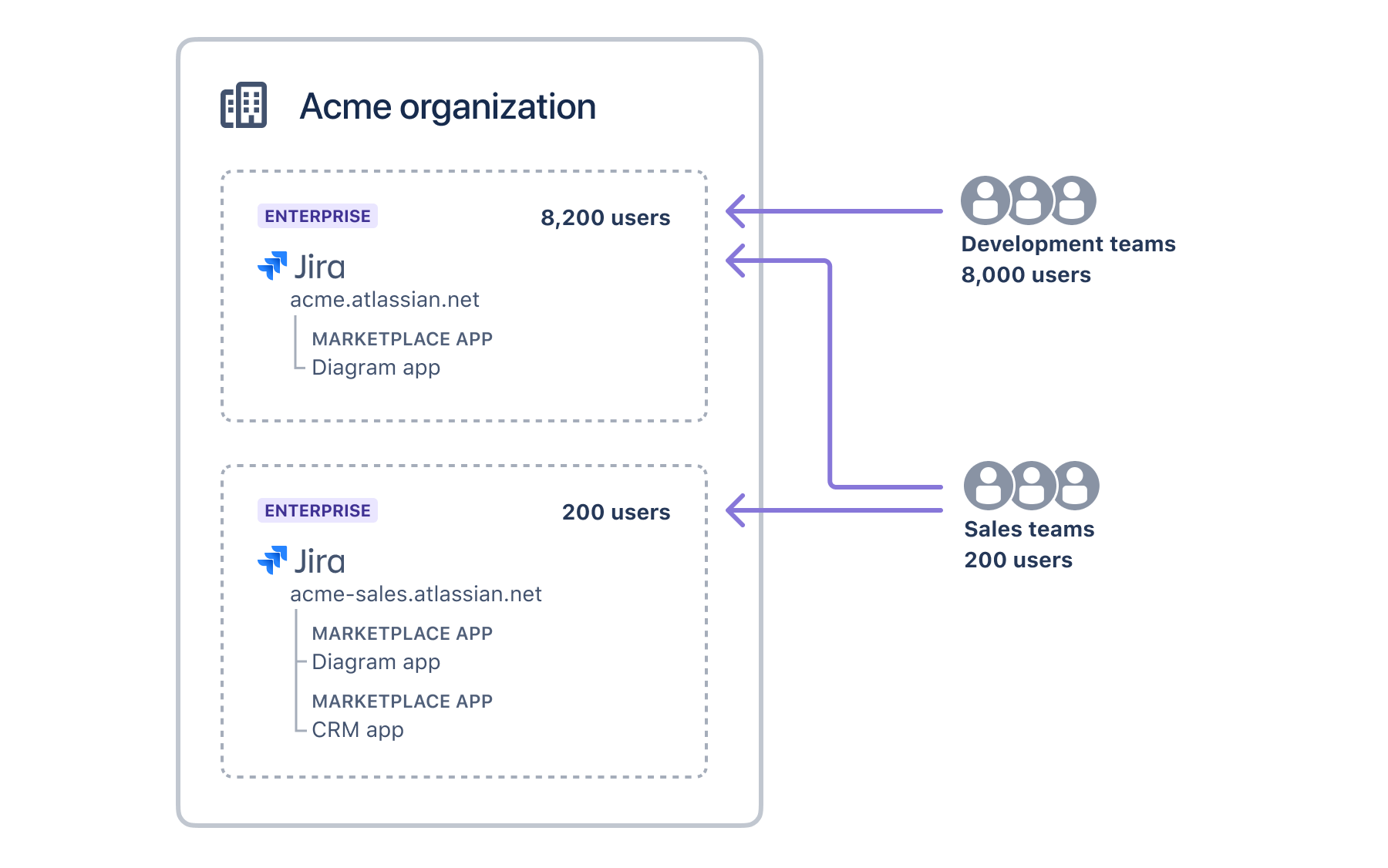Do multiple instances affect Marketplace app costs in Enterprise plans?
While an Enterprise plan allows you to have up to 150 instances of an Atlassian app at no additional cost, Marketplace apps are not included in your plan. Marketplace apps are billed for each instance individually based on the user tier you set for that instance at purchase (or later by contacting us).
In a large Atlassian app instance, if you have a Marketplace app that’s only needed by some people, you may end up paying for users who never need to use that Marketplace app. To avoid this situation you could choose to add the Marketplace app to a separate Atlassian app instance with fewer users. This generally results in a lower Marketplace app bill, but could also make it harder for people to collaborate with others, search for issues and pages, move items between projects and spaces, and would increase the Atlassian app administration overhead.
It’s a trade-off. You’ll need to consider whether the people who need the Marketplace app work together in the same projects and spaces, or across many different ones with people who don’t need the Marketplace app.
For a more general overview of how multiple instances work, see What are the benefits of multiple instances?
Example scenario
The Acme development teams (8,000 people) and sales team (200 people) currently use the same Jira instance. The sales team’s projects are only accessible to the sales team. All teams use a diagram Marketplace app, and the sales team also uses a customer relationship management (CRM) Marketplace app. This app is not used by any other teams.

Based on this, Acme is currently billed for:
Jira Enterprise
8,200 Marketplace app users for the diagram app
8,200 Marketplace app users for the CRM app.
If Acme wanted to reduce their Marketplace app costs, they could consider giving the sales teams a separate Jira instance for their projects, while still allowing them to access the Jira instance used by the development teams. Here’s how it could look.

With this structure, all 8,200 people are still covered by the Jira Enterprise plan, and Acme would be billed for:
8,400 Marketplace app users for the diagram app, which is installed in both instances (8,200 + 200)
200 Marketplace app users for the CRM app, which is only installed in the sales team’s instance.
This means Acme no longer pay for the users who don’t need the CRM app, which may be a significant saving. However, it also means the sales team is working across two instances, which may add a lot of overhead to their work.
Estimate the actual costs
Marketplace app pricing changes by user tier. Because the price may be higher at a lower user tier, it is worth estimating the actual costs when making decisions about your instances.
To estimate actual Marketplace app costs, head to the app listing on Marketplace and select the Pricing tab. You can use the estimate tool to see how your bill would change with different user counts. Remember to select Annual for the Atlassian app billing cycle.
When is the best time to add more Atlassian app instances?
If you are considering adding more Atlassian app instances, we recommend doing this before new teams or users are onboarded. This is because moving teams and their data around after people have already been using the Atlassian apps for some time can be difficult, and may involve exporting and importing data between instances, or performing a cloud-to-cloud migration. Learn what's involved in a cloud-to-cloud migration
Was this helpful?